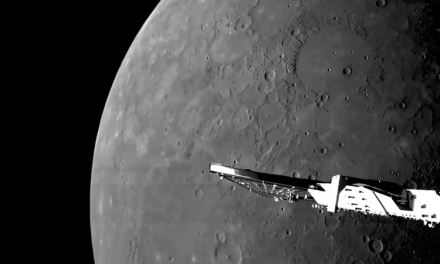Here’s the first image of the supermassive black hole at the center of the Milky Way Galaxy.
Black Holes are real. They are made from stars collapsing from extreme gravity. They are invisible, except for superheated gases that surround the hole. And now we have a picture of the Milky Way’s supermassive black hole, located in the heart of our galaxy.
The black hole is called Sagittarius A*, often abbreviated to Sgr A* and pronounced “Sagittarius A star.” It was imaged by the Event Horizon Telescope (EHT) team. This is a global team of 800 scientists that link up 8 radio telescopes around the world to make one giant telescope.
“It is a dream that comes true after decades of work,” said Heino Falcke, an astrophysicist at Radboud University in the Netherlands. “I always knew this day would come, but I never expected it to be so clear and impressive right away.”
The image immediately reveals new information about the Milky Way’s central monster. “The major things we found out about Sag A* were: Is the black hole spinning? Yes, it is,” said Sara Issaoun, an astrophysicist and member of the EHT team. “And what is the orientation of the black hole with respect to us? Now we are fairly confident it is pointed more or less face on to us,” with the poles pointing up and down, as though we were viewing it from a spot high above its equator.

In 2019, the Event Horizon Telescope released a historic first image of a supermassive black hole in another galaxy. But it was 54 million light years away in the M87 galaxy. And incredibly active, with giant jets of energy in x-ray and visible light.
In contrast, Sagittarius A* is mostly dormant and only occasionally absorbs gas or dust, but nonetheless has an estimated mass 4 million times the mass of our sun. We may owe our existence to the relatively quiet Sgr A* not blasting out energy jets. But there are still mysteries that surround our supermassive black hole, and further observations from the EHT promise to reveal more.
In order to take an image of Sagittarius A*, the researchers had to confront unique observational challenges. Sagittarius A* is small — just 30 times wider than our sun — and 27,000 light-years distant. Because it is relatively small, any activity on Sagittarius A* — such as the motion of the trillion-degree plasma that surrounds it — occurs 1,000 times faster than it does on M87’s black hole.
“The material was swirling around Sag A* so quickly that Sag A*’s appearance could change from minute to minute,” said Katie Bouman, a computer scientist now at the California Institute Technology who helped develop an algorithm to turn vast amounts of EHT data into an image. Bouman was given a professorship at CalTech after her pioneering computer work on the M87 supermassive black hole.
More than 1,000 hard drives were physically transported back to two processing facilities, one at the Haystack Observatory near Boston, and another at the Max Planck Institute for Radio Astronomy in Bonn, Germany, to help generate the new image.
Here’s a zoom earth to the black hole.
-30-
![]()
David Raiklen wrote, directed and scored his first film at age 9. He began studying keyboard and composing at age 5. He attended, then taught at UCLA, USC and CalArts. Among his teachers are John Williams and Mel Powel.
He has worked for Fox, Disney and Sprint. David has received numerous awards for his work, including the 2004 American Music Center Award. Dr. Raiklen has composed music and sound design for theater (Death and the Maiden), dance (Russian Ballet), television (Sing Me a Story), cell phone (Spacey Movie), museums (Museum of Tolerance), concert (Violin Sonata ), and film (Appalachian Trail).
His compositions have been performed at the Hollywood Bowl and the first Disney Hall. David Raiken is also host of a successful radio program, Classical Fan Club.
















